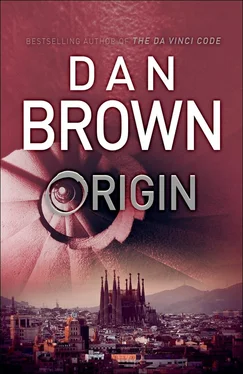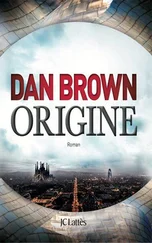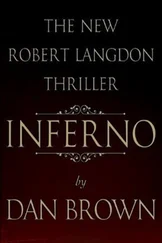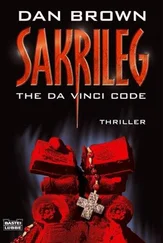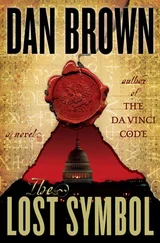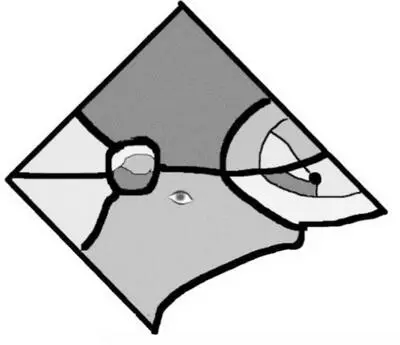
Langdon had already decided that the eyeball featured near the center of the piece — a staple of Miró’s work — almost certainly indicated the precise spot where Winston existed, the place on the planet from which Winston viewed the world.
Ambra turned back from the window, looking both joyful and stunned. “Winston’s self-portrait is not a Miró. It’s a map !”
“Exactly,” Langdon said. “Considering Winston has no body and no physical self-image, his self-portrait understandably would be more related to his location than to his physical form.”
“The eyeball,” Ambra said. “It’s a carbon copy of a Miró. But there’s only one eye, so maybe that’s what marks Winston’s location?”
“I was thinking the same thing.” Langdon turned to the pilot now and asked if he could set the helicopter down just for a moment on one of the two little parks on Winston’s block. The pilot began to descend.
“My God,” Ambra blurted, “I think I know why Winston chose to mimic Miró’s style!”
“Oh?”
“The palace we just flew over is the Palace of Pedralbes.”
“ ¿Pedralbes? ” Langdon asked. “Isn’t that the name of—”
“Yes! One of Miró’s most famous sketches. Winston probably researched this area and found a local tie to Miró!”
Langdon had to admit, Winston’s creativity was astonishing, and he felt strangely exhilarated by the prospect of reconnecting with Edmond’s synthetic intelligence. As the helicopter dropped lower, Langdon saw the dark silhouette of a large building located on the exact spot where Winston had drawn his eye.
“Look—” Ambra pointed. “That must be it.”
Langdon strained to get a better view of the building, which was obscured by large trees. Even from the air, it looked formidable.
“I don’t see lights,” Ambra said. “Do you think we can get in?”
“ Somebody’s got to be here,” Langdon said. “Edmond must have staff on hand, especially tonight. When they realize we have Edmond’s password — I suspect they will scramble to help us trigger the presentation.”
Fifteen seconds later, the helicopter touched down in a large semicircular park on the eastern border of Winston’s block. Langdon and Ambra jumped out, and the chopper lifted off instantly, speeding toward the stadium, where it would await further instructions.
As the two of them hurried across the darkened park toward the center of the block, they crossed a small internal street, Passeig dels Til·lers, and moved into a heavily wooded area. Up ahead, shrouded by trees, they could see the silhouette of a large and bulky building.
“No lights,” Ambra whispered.
“And a fence,” Langdon said, frowning as they arrived at a ten-foot-high, wrought iron security fence that circled the entire complex. He peered through the bars, unable to see much of the building in the forested compound. He felt puzzled to see no lights at all.
“There,” Ambra said, pointing twenty yards down the fence line. “I think it’s a gate.”
They hurried along the fence and found an imposing entry turnstile, which was securely locked. There was an electronic call box, and before Langdon had a chance to consider their options, Ambra had pressed the call button.
The line rang twice and connected.
Silence.
“Hello?” Ambra said. “Hello?”
No voice came through the speaker — just the ominous buzz of an open line.
“I don’t know if you can hear me,” she said, “but this is Ambra Vidal and Robert Langdon. We are trusted friends of Edmond Kirsch. We were with him tonight when he was killed. We have information that will be extremely helpful to Edmond, to Winston, and, I believe, to all of you.”
There was a staccato click.
Langdon immediately put his hand on the turnstile, which turned freely.
He exhaled. “I told you someone was home.”
The two of them hurriedly pushed through the security turnstile and moved through the trees toward the darkened building. As they got closer, the outline of the roof began to take shape against the sky. An unexpected silhouette materialized — a fifteen-foot symbol mounted to the peak of the roof.
Ambra and Langdon stopped short.
This can’t be right , Langdon thought, staring up at the unmistakable symbol above them. Edmond’s computer lab has a giant crucifix on the roof?
Langdon took several more steps and emerged from the trees. As he did, the building’s entire facade came into view, and it was a surprising sight — an ancient Gothic church with a large rose window, two stone steeples, and an elegant doorway adorned with bas-reliefs of Catholic saints and the Virgin Mary.
Ambra looked horrified. “Robert, I think we just broke our way onto the grounds of a Catholic church. We’re in the wrong place.”
Langdon spotted a sign in front of the church and began to laugh. “No, I think we’re in the exact right place.”
This facility had been in the news a few years ago, but Langdon had never realized it was in Barcelona. A high-tech lab built inside a decommissioned Catholic church. Langdon had to admit it seemed the ultimate sanctuary for an irreverent atheist to build a godless computer. As he gazed up at the now defunct church, he felt a chill to realize the prescience with which Edmond had chosen his password.
The dark religions are departed & sweet science reigns.
Langdon drew Ambra’s attention to the sign.
It read:
BARCELONA SUPERCOMPUTING CENTER
CENTRO NACIONAL DE SUPERCOMPUTACIÓN
Ambra turned to him with a look of disbelief. “Barcelona has a supercomputing center inside a Catholic church?”
“It does.” Langdon smiled. “Sometimes truth is stranger than fiction.”
The tallest cross in the world is in Spain.
Erected on a mountaintop eight miles north of the monastery of El Escorial, the massive cement cross soars a bewildering five hundred feet in the air above a barren valley, where it can be seen from more than a hundred miles away.
The rocky gorge beneath the cross — aptly named the Valley of the Fallen — is the final resting place of more than forty thousand souls, victims of both sides of the bloody Spanish Civil War.
What are we doing here? Julián wondered as he followed the Guardia out onto the viewing esplanade at the base of the mountain beneath the cross. This is where my father wants to meet?
Walking beside him, Valdespino looked equally confused. “This makes no sense,” he whispered. “Your father always despised this place.”
Millions despise this place , Julián thought.
Conceived in 1940 by Franco himself, the Valley of the Fallen had been billed as “a national act of atonement” — an attempt to reconcile victors and vanquished. Despite its “noble aspiration,” the monument sparked controversy to this day because it was built by a workforce that included convicts and political prisoners who had opposed Franco — many of whom died from exposure and starvation during construction.
In the past, some parliamentary members had even gone so far as to compare this place to a Nazi concentration camp. Julián suspected his father secretly felt the same way, even if he could never say so openly. For most Spaniards, the site was regarded as a monument to Franco, built by Franco — a colossal shrine to honor himself. The fact that Franco was now entombed in it only added fuel to the critics’ fire.
Читать дальше
